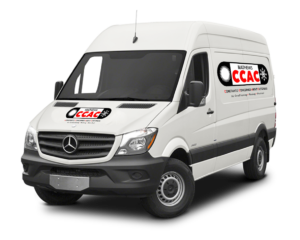
Do you have a gas furnace or water heater in your Coastal Bend home? If so, it’s vital to learn exactly how these combustion appliances can jeopardize the well-being of your family. To ensure you have a safe home air supply, it may be necessary to enclose the equipment inside a sealed combustion closet.
How Combustion Equipment Compromises Air Quality
Oftentimes, furnaces and water heaters are installed within a home’s conditioned living area, and draw their combustion air from the indoor air supply. The appliances are vented via a flue that sends combustion exhaust fumes outdoors. This air intake and venting setup creates two serious safety threats:
Back-drafted water heater fumes.
Pulling combustion air from your home’s interior and expelling it outside can create negative pressure that causes a back draft of water heater exhaust through its vent pipe. It can also allow byproducts of incomplete fuel combustion – such as carbon monoxide – into your air supply.
Bypassed furnace safety feature.
Furnaces have a safety sensor that detects pressure changes and shuts down the burner if the flue gets blocked. However, when a water heater is connected to the same flue, the sensor can’t read the pressure correctly. This can let hazardous trapped fumes backdraft into the house via the shared flue.
A Sealed Combustion Closet Can Safeguard the Air Supply
Enclosing the furnace and water heater in a sealed combustion closet can keep dangerous exhaust fumes out of your indoor air. To work effectively, the closet must:
- Be thoroughly sealed so no air can leak out into your living space.
- Have a door that’s equipped with weatherstripping and a snug-fitting threshold so it’s not a source of air leakage.
- Have any and all penetrations sealed against leakage.
- Be equipped with two combustion air inlets. One should terminate a foot above floor level, the other a foot from the ceiling.
- Have the air intakes sized according to the combined equipment capacities. The sizing guideline stipulates a square inch of intake space per 4,000 Btu of total input capacity.
For help ensuring your safe home air supply, contact us at CCAC.












